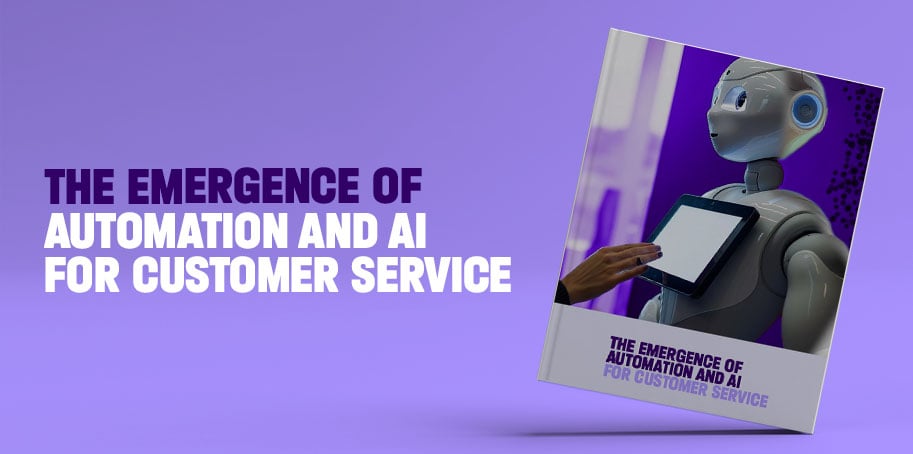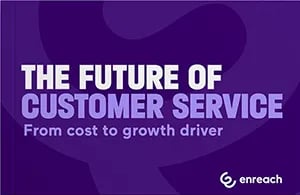4 min read
Too many calls? How AI reduces failure demand in customer service
Ready for a fun fact?
42% of people would rather scrub a toilet than call customer service. 🙈
This quirky but real statistic highlights a common aversion to customer service calls. Often, these calls aren't just about getting help; they're examples of what we call 'failure demand.' This happens when customers need to reach out due to issues that could have been avoided.
Here's the good news: AI is stepping in to change the game. While AI is already improving the quality of customer service calls, it's also tackling failure demand head-on, reducing the need for these calls in the first place.

Understanding unnecessary contacts and failure demand
Do you know what types of calls your agents spend their time on?
Imagine this: more than half the time people call customer service, it's for something that could've been sorted out without picking up the phone. And in some sectors, like telecom operators, the number can shoot up to a whopping 70 percent.
These unnecessary or avoidable contacts, which we can also label as 'failure demand', represent a significant challenge. They are contacts that don’t bring value to the customer or the company. They're the ones where, if things were just a bit clearer or easier to use, people wouldn't need to bother calling or messaging. For example:
- I can't find the return policy on your website; where is it?
- Your gadget's instructions are too complicated; how do I use this thing?
- There are so many versions of this product; which one should I get?
What is failure demand?
It is demand caused by a failure to effectively address a customer’s issue on the first attempt. Failure demand happens when customers need to make repeated contacts with a company because their issue wasn't resolved effectively the first time.
Failure demand is essentially unwanted demand on the company's resources. This demand is not due to new or genuine customer needs but is instead caused by the company's own shortcomings or failures.
For example:
- My coffee maker still isn't working; the advice you gave me last time didn't help.
- You overcharged me again! I thought you said it was fixed after my last call.
- I was supposed to get a call with my test results, but nobody called me back.
Why this matters
Nobody enjoys the back-and-forth of unnecessary calls - not you, not your customers, and definitely not your customer service team.
On average 63% of all customer contacts are cost driving - in other words, failure demand is resulting in additional costs for the company, rather than contributing to revenue or customer satisfaction in a meaningful way.
Apart from saving costs and reducing call volumes, addressing failure demand makes life easier for everyone involved. When customers get their issues sorted efficiently the first time - or don’t have to contact you at all to begin with - they're happier and more likely to stick around. Plus, it saves them from the headache of calling again and again.
Happy customers mean a happy business.
And your customer service team gets to focus on what they do best. Less time on repeat queries means more time tackling complex issues, which is not only more satisfying but also more impactful for them.
Terveystalo: Understanding failure demand in healthcare
Terveystalo is a Finnish private healthcare company that offers a wide range of health and well-being services. These services include general practitioner and specialist appointments, assessment of the need for care, and remote consultations.
Titta-Liisa Luoma, Director of Customer Service at Terveystalo, sheds some light on failure demand in their customer interactions: "We often see failure demand when people call about what happens next in their treatment journey. For example, after visiting the doctor, they may contact customer service to ask about lab tests, test results, or booking follow-up appointments."
How does spotting failure demand help a business improve? Recognizing that these repeated inquiries often stem from the organization's shortcomings, rather than the customer's needs, allows for a strategic shift. Healthcare providers often focus on quantitative metrics like the number of services provided or call durations. By pinpointing the causes of failure demand, they can shift their focus to improving customer satisfaction, which in turn positively impacts business results.
Cutting down unnecessary contacts makes customers happier. If healthcare is more focused on what the company wants than what the patient needs, it can cause problems. For instance, making care smoother for patients means they don't have to ask as many questions. It's important that customers feel listened to and understood, or they'll keep coming back with more issues.
Lastly, the impact on employee experience can't be overlooked, especially for our heroes with the headsets – the customer service team. Reducing failure demand not only eases their workload but also allows them to use their expertise more effectively. They're not just call handlers; they're skilled professionals. By focusing on more fulfilling tasks, they can provide better service. Happier staff, happier patients – it's a win-win.
Analysing customer interactions with AI
Understanding what's not working in your business is about more than just listening to customer complaints. The traditional ways - like customer surveys and manually noting down reasons for calls - aren't enough in our data-centric era.
That's where customer contact intelligence platforms like Aiwo come in. They offer a new way to gather feedback by using AI to analyse customer interactions at scale. AI can sift through calls and chats, spot patterns, and figure out where things are falling short.
“Calls are currently the most interesting area, as we haven't been able to scan the content of calls before” says Jani Jokela, COO at Aiwo Digital.
“Aiwo's technology lets us explore and understand what's being said in calls in a way that wasn't possible until now. But it doesn't stop there – we're also analysing chats, emails, and other forms of communication to provide a deeper insight into what customers are talking about and what they need."
Transcripts as a source of rich data
Enreach has the ability to convert calls into transcripts as part of our conversation analytics feature. This functionality automatically transcribes spoken words during a call into written text, allowing for the extraction of valuable insights from customer interactions. These transcripts become an essential resource for platforms like Aiwo, which specialise in conversation intelligence.
Enreach leverages AI to enhance customer service by analyzing these transcripts, providing deeper insights and proactive solutions to customer issues. We prioritise data security, ensuring that all transcript data is protected and handled with the highest standards of confidentiality.
Getting good insights from customer conversations really hinges on the quality of the transcripts. Whether these transcripts are from phone calls or online chats, it's crucial that they capture every detail correctly. High-quality data is essential for deep analysis.
This precision allows tools like Aiwo to effectively mine the data and uncover important themes and recurring issues. This analysis helps in pinpointing why customers might need to contact you, enabling you to address these issues more effectively. By doing so, you can improve your messaging and operations, reducing the frequency of unnecessary customer contacts.
Want to enhance every conversation with the power of AI? Discover Enreach's AI-driven features.
Explore the future of AI in customer service
Discover how AI can transform your customer service in our whitepaper, "The Emergence of Automation and AI for Customer Service." Learn from real European businesses and get practical tips to implement today.

Each month, we share articles our team finds worth reading to help you stay informed as Voice AI transforms customer experiences.


